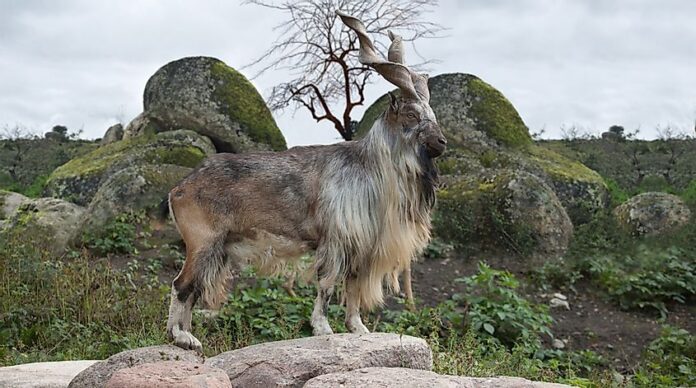This article is all about the national animal of Pakistan-Markhor. Every country has its national animal-plant fruit games etc, Same as other countries Pakistan has its national plant-animal, etc. Pakistan’s national animal is Markhor.
National Animal
National animals are animals picked by the nation as an exceptional image of the country. Every nation has its national animal and is utilized by bringing together the picture of the nation before the world. National animals are carefully chosen for their biology, customs, culture, and legends, and myths.

National Animal of Pakistan
The National Animal of Pakistan is Markhor The name “Markhor” is a blend of two words, Persian and Pashto. “Blemish” signifies snake and “Khor” signifies eater. Subsequently, the name of the National animal of Pakistan in English is “Snake Eater”. This is a result of Markhor’s capacity to kill the snakes and their horns resemble looping snakes. Markhor can climb on any kind of mountain, either a rocky one or sandy. The fat level in markhor is zero percent, which also indicates its purity and naturalness.
Why Markhor was selected as a National animal
The intelligence agency of Pakistan Inter-Services Intelligence (ISI) has chosen Markhor as the authority image. This stands as a manifestation of the strength of all ISI officials, and ISI must protect Pakistanis from all kinds of threats of evil existence and terrorist attacks. Another reason may be related to the case where Markhor lived on the top of a mountain to kill the most toxic snake seeds that once made fun of humans, Markhor to protect humans. They were there, and ISI also protected them.
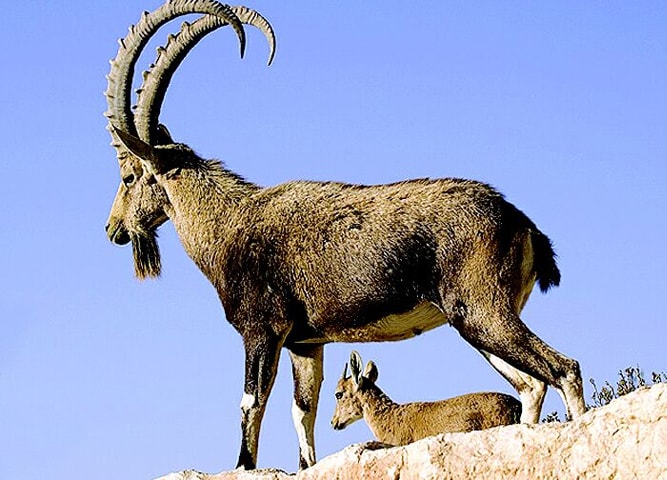
They chose Markhor as the official symbol because they chose us from the enemies. In 2018, Pakistan International Airlines (PIA) additionally settled on Markhor as the tail logo for all PIA. Due to these various acts, markhor in Pakistan is such a famous variable that everyone tries to copy the logo and trademark of markhor head and horns. Most of the sports events are labeled and associated with it. As recently first Pakistan lives cricket tournament was arranged under the same banner which implies that whatever achieve on the national level is correlated with the markhor symbol. These all things demonstrate that how popular it is in Pakistan.
Distribution of Markhor
In most countries, the national symbol is chosen with its greatest representation in mind. That might be the reason Markhor was respected as the National animal of Pakistan. Its environment covers Balochistan, Gilgit-Baltistan, Khyber Pakhtunkhwa, and Azad Kashmir.
In Pakistan, different kinds of Markhor exist, which are classified under the structure of the horns and the appearance of twisting. Afghanistan ones or Kabul Markhor, followed by Suleiman or Balochistan Markhor. Kabul Markhor has been accounted for in the southern boundary locale of Chitral and the Murgazar slopes of the Swat Valley.
It additionally happens in the Khanori Hills of the Malakand Agency, the Sakura Mountains upper east of Mardan, and the Safedkho Mountains in the upper Kurram Valley. Suleiman Markhor is broadly appropriated, yet the number is restricted. It happens in all major neighboring mountains north and east of Quetta. Chiltan Markhor is bound to Chiltan Hill, southwest of Quetta. These species are additionally delegated Astor markhor with erupted horns.
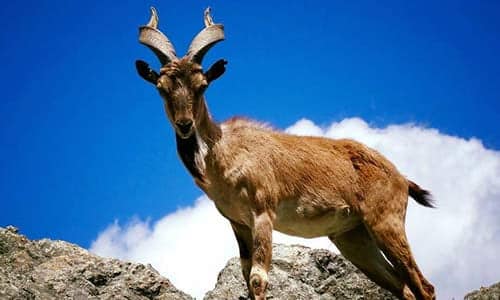
Astor Markhor is bound to the inclines of the Nanga Parbat massif in the Gilgit district. Kashmir or Pil Panjal Markhor. Pil Panjal or Kashmir Markhor is around 65 km north of the town of Chitral, on the slopes of Dir to the south, and Ludakh Sar and Mankial in Swat Kohistan and Indus Kohistan to the west. Some of these variants also occur in Azad Kashmir.
The most generally dispersed species is the Kashmir Markhor. It has a critical populace. Grown-up guys of this species gauge 80–110 kg heavier than other Markhor breeds and are 39–41 inches tall.
Habitat and lifestyle of Markhor
Living in mountainous landscapes requires the ability to move up and down hills, often rocky terrain, regardless of size. Calls are very skilled mountaineers.
Markhor is often active in the daytime, especially in the morning and noon. Their diets change according to seasons. In summer and spring, they graze and eat grass, while in winter they start browsing, sometimes they like to eat high branches of trees. Markhors are often found in herds, usually consist of 9 members.
Their herd contains mostly adults. These Adult males are largely introverted. Most of the population of markhor contains adult females and kids. These majestic animals have many predators. Therefore, it has sharp eyesight and a strong sense of smell to detect nearby predators. Markhor is well aware of his surroundings and is very vigilant against predators. In exposed areas, they quickly find predators and escape. Their alert call is very similar to the bark of a domestic goat.
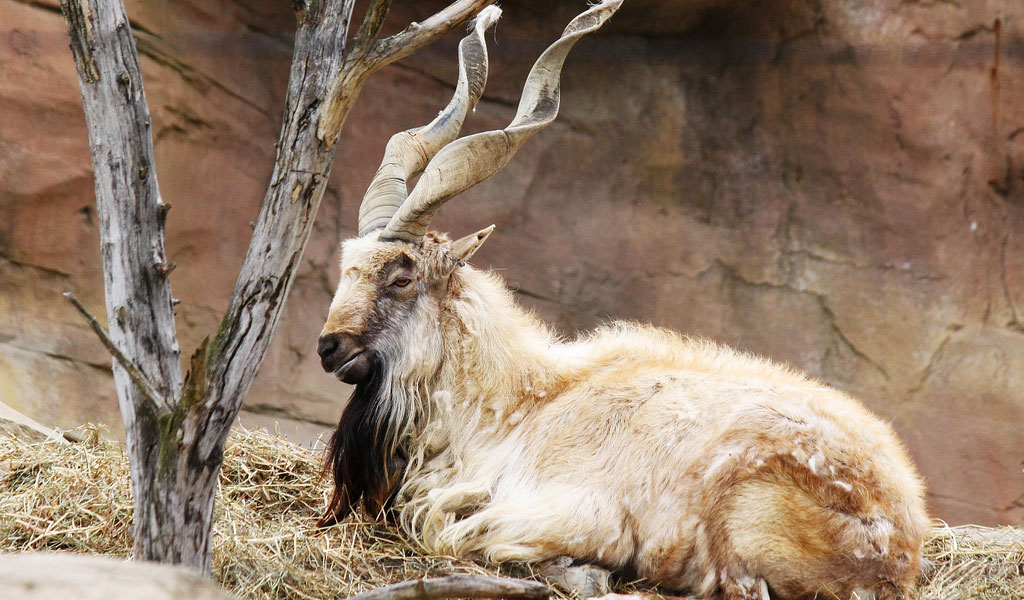
Male Markhor can grow up to 9 years of age. However, as the body begins to contract as it grows older, gray wolves and snow leopards become targets for predators such as avalanches, floods, and cape natural disasters such as landslides.
It can effortlessly assume the age of Markhor by figuring the circles of Markhor’s horns.
The female Markhor usually gives birth from the previous week of May to half June. Every incubation gives birth to single or double young babies. The child can walk quickly not having any assistance, but the mamas choose to lie low in tunnels and curved logs to insure themselves from predators.
Kashmir Markhor essentially occupies the dry mild coniferous and oak woodlands of the Hindu Kush and Himalayas, Chitral, Afghanistan’s Nuristan, Kohistan, Gilgit-Baltistan, Swat, Azad Jammu, and Kashmir.
Physical Appearance
The distinction between the guys and female markhor is that guys have a dark shaded facial hair growth, while females have little tufts on the jawline. In winters their jacket hair becomes long, while in the mid-year it sheds fleece and the long hair by scouring its body against rocks.
Markhor coats come in several standard colors. Their bodies are usually tan or grayish, with a white chest and lower abdomen. In any case, now and again, this coat is a rosy shading. Their feet are in high contrast and their countenances are dull. Markhor horns can also be different, so these creatures do not look the same in all seasons.
Predation of Markhor
Humans are Markhor’s main predators. Markhor lives in mountainous habitats that are so steep and inaccessible that people rarely approach some of the Markhor population bases. The brilliant falcon (Aquila chrysaetos) is accounted for to go after youthful markhor.
In the wild, the Himalayan Lynx (Felis lynx), the Leopard feline (Felis bengalensis), the snow panther (uncia), the wolf (Canis lupus), and the mountain bear (Ursus thibetanus) is Markhor’s principal hunter.
Foundation of prize hunting in Pakistan
Prize hunting is a broadly perceived untamed life preservation device, and it was acknowledged for the protection and preservation of wild assets by the local area through motivating forces through hunting costs. This methodology was as of late embraced in Pakistan, where most types of wild ungulate are jeopardized. Hence, government and non-legislative preservation bunches are attempting to ensure wild ungulates through prizes.
A hunting program in the CBC region by furnishing the local area with a piece of the prize hunting charge as a motivation. Pakistan has been a world innovator in presenting the idea of local area based prize hunting programs (CTHPs) to the protection of biodiversity in elevated environments (WWF-P2001b).
Restricted prize hunting has been accessible in Balochistan, NWFP, and the northern areas since the 1980s, including Suleiman Markhor, and Himalayan ibex (Capra ibex sibirica). The benefits (expense) from hunting were utilized to ensure and secure the variety.GOP has dispatched a few biodiversity protection programs, like CTHP, that require manageability backing to help both untamed life and the local area over the long haul.
The fundamental objective of Pakistan’s CTHP is to add to the security and preservation of Pakistan’s rich and important biodiversity. CTHP objectives should be the insurance of untamed life and their natural surroundings and can be accomplished through the two networks and government offices.
Till to 2015, the protection status of the species was recorded as “imperiled” by the IUCN’s red rundown. However, it has since dropped down the rundown to “close compromised,” which implies that their populace is developing once more.
As Markhor is a national animal in the country, this is the moral responsibility of every countryman that they must shield Markhor from a wide range of dangers. KPK has a law that on the off chance that somebody wrongfully chases Markhor, they will be deeply and heavily kinds of fines, including RS.3, a fine of 500,000.
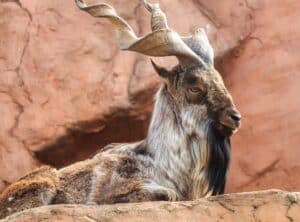
Assuming outsiders need to chase Markhor, they need to make a $ 6,500 permit. A few associations assume a significant part in the security of Markhor, including WWF, the Pakistan Zoological Society, KPK Wildlife, and Biodiversity. They are attempting to shield Markhor from poaching and hunting, just as from catastrophic events like floods.


